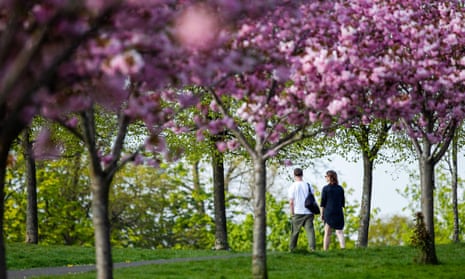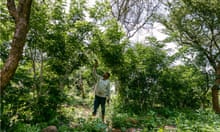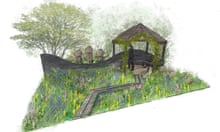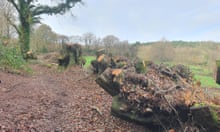Councils in the Glasgow area have pledged to plant 18m trees – equivalent to 10 trees for every resident – as the city prepares to host a global climate summit later this year.
The Clyde Climate Forest (CCF) project hopes to increase tree cover in urban areas of Glasgow to 20% and ensure that a fifth of the region’s rural landscape is forested or planted with native woodland over the next decade.
Glasgow is the host city for the Cop26 climate talks in November, when world leaders are expected to set much tougher targets to combat global heating, as evidence grows that the world is close to breaching the 1.5C limit agreed in the Paris climate treaty in 2016.
The summit had intensified pressure in Scotland for far more radical action to combat climate heating, by cutting emissions and moving to a zero-carbon economy, but also preparing for extreme weather being forecast.
Already one of the wettest regions of the UK, the greater Glasgow area is expected to be hit by far heavier storms in future and prolonged periods of heavy rainfall, but also, in common with the rest of the UK, intense heatwaves.
Eight local councils in the greater Glasgow area have signed up to the climate forest target, thought to be one of the most ambitious of any city region in the UK. Until 2018, Scotland as a whole failed to meet the government’s annual tree-planting targets.
Màiri McAllan, the Scottish environment minister, said: “Tree planting is key to tackling the twin crises of climate change and biodiversity loss and there is tremendous support for it across Scotland. The Clyde Climate Forest taps into this and the benefits will last for generations.”
Max Hislop, CCF’s incoming director, said its goals included greatly increasing tree cover in some of Glasgow’s poorest peripheral estates, such as Easterhouse and Castlemilk, and former coal-mining sites, as well as planting trees in city streets, parks and squares to help cooling during heatwaves.
The partnership also proposes increasing forestry, including commercial plantations, by up to 9,000 hectares (22,240 acres) across the region, as well as increasing the size of many broadleaf woods by at least 20%, funded in part by a £400,000 initial grant from the Woodland Trust.
Echoing similar programmes by cities and regions across the UK, the scheme is expected to help mitigate the worst effects of climate heating – the flooding, landslips and erosion expected to threaten outlying communities, rail links and roads, as well as absorbing CO2 emissions and restoring lost biodiversity.
“These are ambitious targets, there is no doubt about it,” Hislop said. “But this is the level of ambition we should be striving for in our responses to both the climate and ecological emergencies. Achieving these targets is the challenge.”
George Anderson, of Woodland Trust Scotland, said: “The climate crisis makes it imperative we find as many places as possible to create new woodland. Beyond that, trees make cities more liveable, so there is a big double benefit to be had from schemes like the Clyde Climate Forest.”










